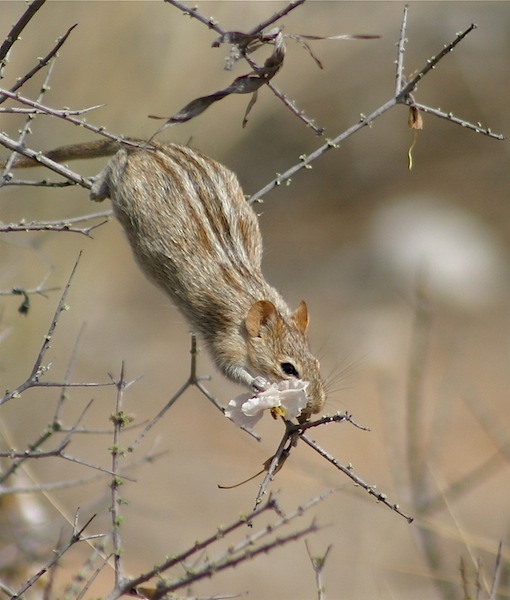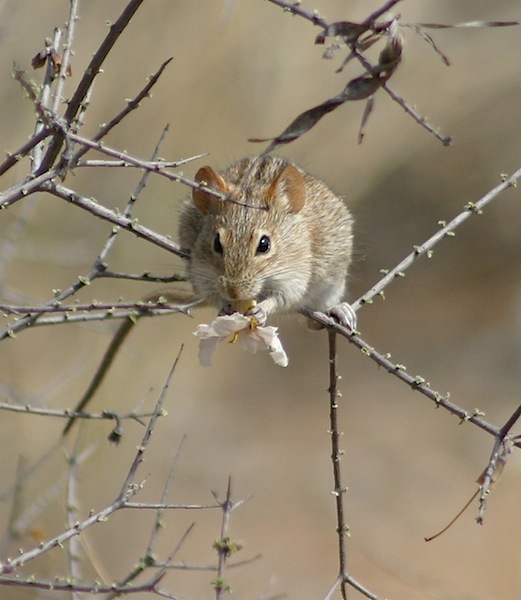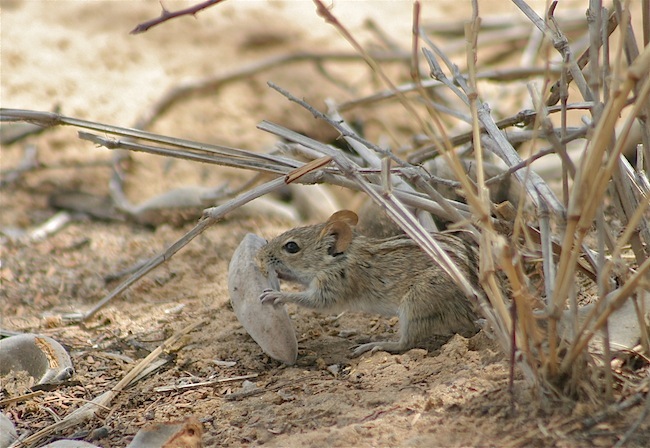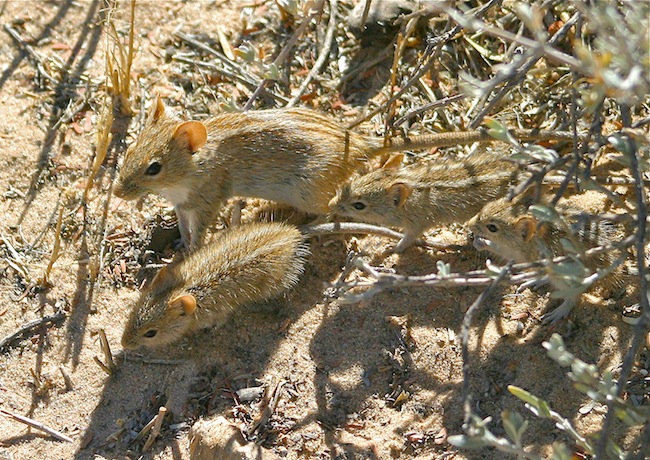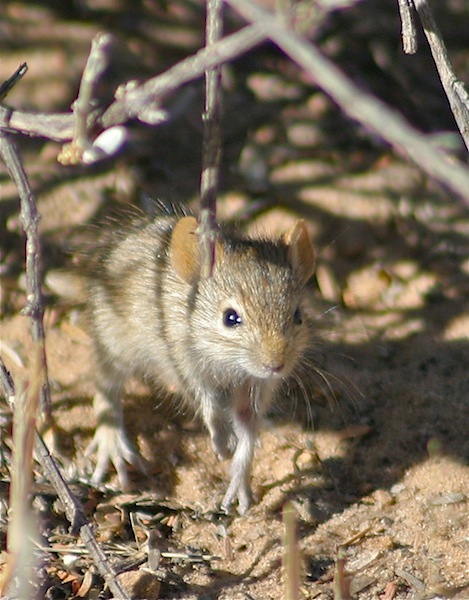Family: Muridae
Rhabdomys is a largely Southern African genus of rodents slightly larger than house mice. Traditionally, the genus has been seen as a single species, Rhabdomys pumilio, though modern evidence on the basis of karyotype, mtDNA analysis, as well as evidence of divergent behaviors among populations, suggest that R. pumilio be reclassified as two or more species and subspecies. As a group, they are unmistakable because no similarly sized Southern African rodents are similarly marked. Color is variable, ranging from dark russet brown to almost grey-white.
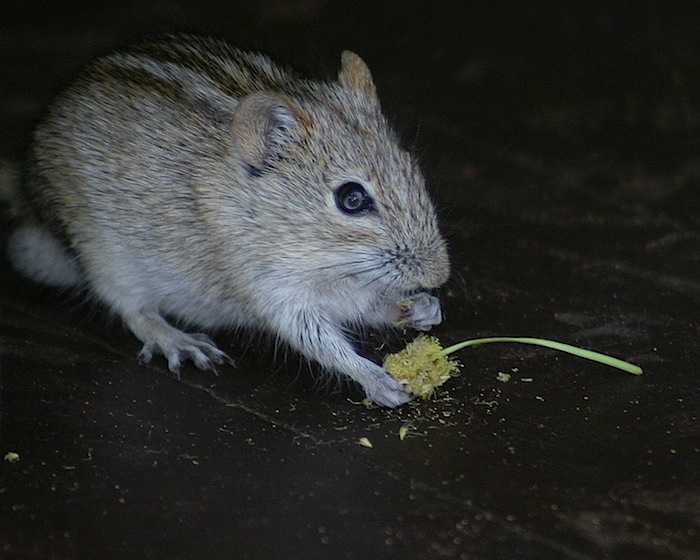 (KTP)
(KTP)Distribution:
Rhabdomys as a genus is widespread and abundant in the Southern African subregion. A few areas apparently do not support a population, but for the most part they are to be found, rather patchily, from the southernmost Western Cape to northern Namibia and parts of Botswana, Mozambique, and Zimbabwe. It also has been recorded from parts of Angola, Zambia, Malawi, Tanzania, Kenya, Uganda and southern Congo.
Habitat and Ecology:
This species occurs in six biotic zones of southern Africa, but is restricted to disjunct montane savannas throughout its range north of South Africa.
Behavior:
Rhabdomys species exhibit a diurnal, bimodal activity pattern, with activity concentrated around mornings and evenings, and reduced during the midday period.



